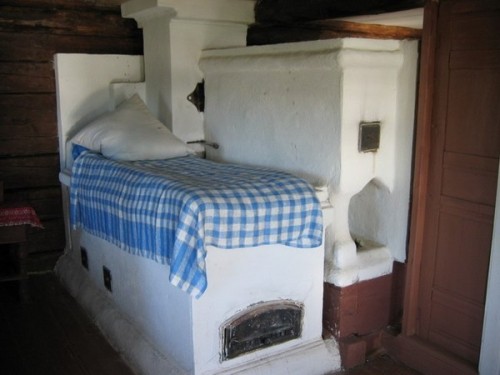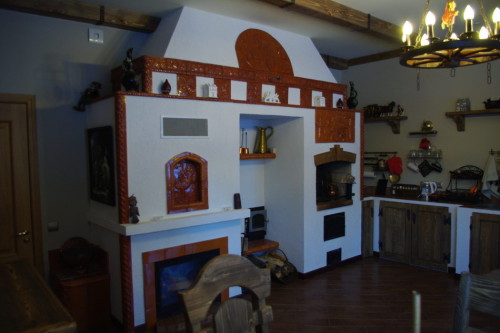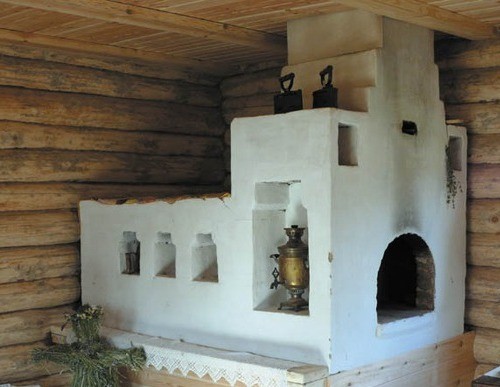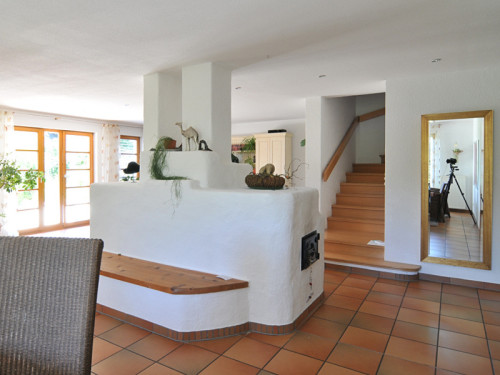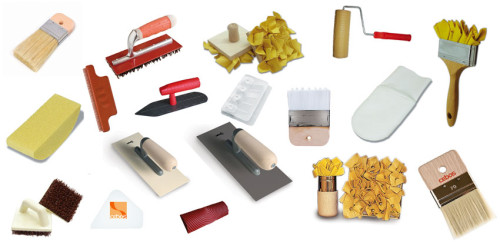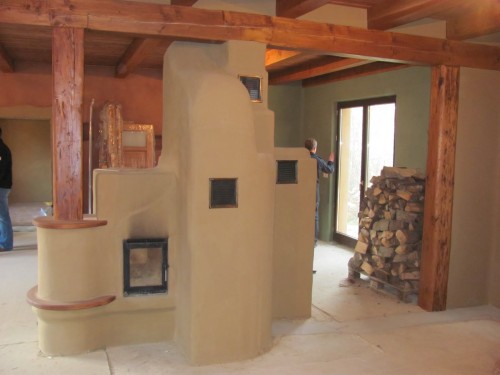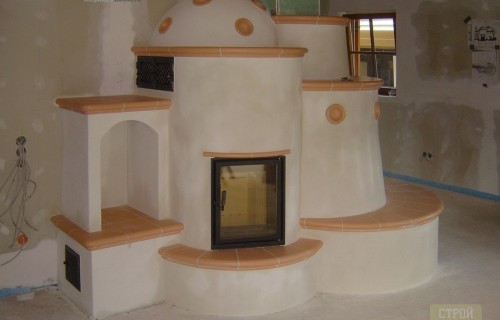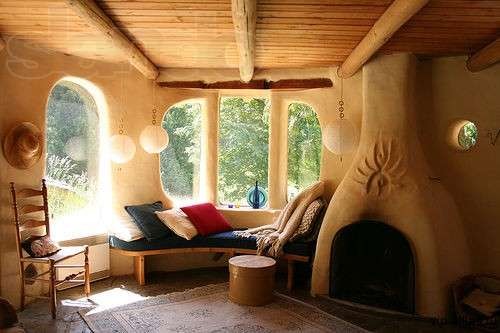
Stucco for furnaces. Than plastering oven Building materials
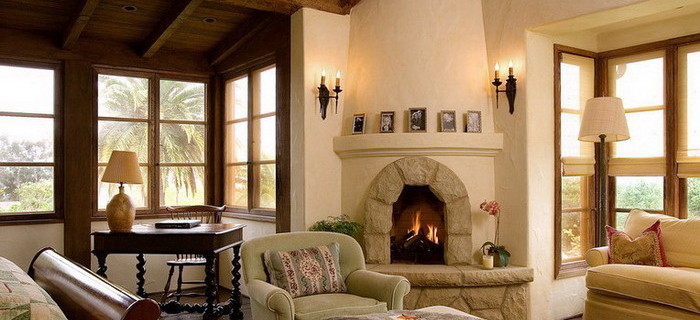
Despite the emergence of new opportunities, with the arrangement of its own private house, many want to create a truly Russian flavor and install the oven. It not only introduces originality in the interior, but also is a very practical element of life: it is preparing extraordinarily delicious dishes, it is much less than the cost of heating at home. But that it was durable and served for a long time, carefully take the choice of the method of finishing. It is best for this purpose a plaster, about all the rules for choosing and applying which you will learn in this article.
Content
Why plaster oven?
The reasons why need to know how to plaster oven properly, several:
- beautiful coating will give the neat view of the whole room where the furnace is installed;
- one-piece canvas will provide high-quality tightness of brickwork;
- the strength of the structure and resistance to destruction is not even in very favorable operation conditions;
- the quality of thermal insulation and heat transfer is improved;
- competently decorated plaster makes the oven safe.

Important! Consider, if you do not spend this work, with time, soot, nothing and the remnants of combustion products will penetrate through the cracks in the masonry and sow on the walls, furniture items, the ceiling, reducing the appeal at times. In addition, all this is harmful to health. You can choose more modern heat-resistant materials for finishing, but the price is much higher, and the technology of laying requires certain skills, so it is unlikely to do without additional expenses to pay for services of professionals. It is for these reasons that the plaster is albeit the most ancient and cheap, but always relevant option for finishing the furnace.
How to choose a mixture of plaster for the furnace?
Criteria for choosing a suitable composition is simple. The solution should be in the frozen form:
- be environmentally friendly, without impurities of synthetic and toxins;
- to withstand high temperatures - do not bargain, do not give crack;
- have excellent thermal insulation properties.
Important! If you still decide to choose a different material, note that it is categorically unacceptable to use Olif or oil paints for this purpose - when the furnace is heated, they will be melted, chemicals are degraded, causing far from the very useful impact on your body.
What to choose a solution for plastering furnaces?
For plaster stoves, several types of mixture are suitable. The difference in component composition and proportions is determined. As the basis, more suitable are considered:
- gypsum material;
- natural clay of different fatness varieties.
Important! The filler may be any material available to you at a price or remaining after the main construction:
- lime;
- asbestos;
- sand;
- fiberglass.
If you chose the plaster as the main raw materials, follow the proportions of such recipes of the mixture of plaster for the furnace:
- Gypsum (1 part) + fiberglass (0.2 parts) + lime (2 parts) + sand (1 part).
- Gypsum + sand (1 part) + 2 parts of lime + 0.2 pieces of asbestos.
Most frequently used plaster recipes for clay-based furnace:
- Clay + sand. The proportion of the mixture is determined by the fat content of clay. In the finished form, it should be quite viscous to conveniently apply to vertical surfaces.
- Clay (1 part) + asbestos (0.1 part) + sand (2 parts).
- Clay + cement (1 part) + sand (2 parts) + asbestos (0.1 part).
- Clay + lime (1 part) + sand (twice as large) + asbestos (0.1 part).
Important! Check out the proposed video to understand how to properly prepare a mortar for the furnace.
Furnace Plaster Tools
As soon as they decided with the composition of the plaster and chose the time of finishing work, immediately prepare all the necessary tools, adhering to this list:
- containers for kneading plaster;
- drill with a nozzle for a knead or any other suitable tool;
- trowel;
- sandpaper of varying degrees of graininess, grater or brush;
- water tank;
- level;
- burlakovin or fine fiberglass mesh (there are special products for plastering);
- nails in 4-5 cm long;
- primer suitable composition.
How to plaster oven?
In order for the dried solution, it was not peeled, did not let the crack and looked beautifully, while performing a job, follow such instructions:
- Carefully clean the base - remove all the dirt, dust, if you update the coating, then the remains of the previous material.
- Clear seams by 5-10 mm in depth.
- We take nails along all seams in a step of 15 cm in such a way that they perform on 1/4 of the length.
- Drink brickwork.
- Make technical pause until it dry out this solution.
- Preheat oven.
- Prepare the plaster mixing, sticking to the proportions of the selected recipe. Prepare for 1 time the number you have time to use as long as right in the tank the solution will begin to push.
- Moisten the surface of the brick masonry with a brush or grater.
- Attach the plaster grid.
- Subscribe 1 layer of plaster with a thickness of 0.5 cm to cells or moistened in water - it will fix the grid. Either fasten it with pre-nails on the seams.
- Make the technical support until the solution clarifies.
- Make 2 layer thick up to 1 cm.
- Hold the pause to rejugate the solution, but not full of frozen.
- Moisten the stucco with water.
- Spell all irregularities with grater or sandpaper.
- Check the coverage for the presence of split or cracks. If such appeared:
- expand cracks;
- moisten with water;
- fill in the inside of the fresh solution;
- speat after drying.
Important! Consider some more recommendations that will provide more convenient work:
- treat the surface in the direction from above-down;
- 1 layer Make a more liquid consistency, 2 - thick;
- on nails in the seams, it is very convenient to navigate relative to the thickness of the layer and the uniformity of the solution distribution.
How to check the quality of plaster on the furnace?
To make sure that you shut down the oven correctly, take the level and check these parameters:
- lack of layer height deviations over the entire height of the furnace more than 1 mm;
- the evenness of the horizontal line of the coating at different points is allowed to deviate no more than 2 mm.
What else to do so that the plaster on the furnace was long enough?
To increase the attractiveness of the appearance of the furnace and the strength characteristics of the plastering, select one of the proposed ways of finishing finish:
- Color the surface with chalk divorced in lime milk.
- Treat plaster coating with salt with salt, sticking to the proportion of 1 bucket at 100 g.
Conclusion
Now you know all the secrets of what and how quickly and without much effort to shook the oven in your home and make it beautiful and durable. Adhere to the rules outlined in this article and you will definitely get a qualitative result.




